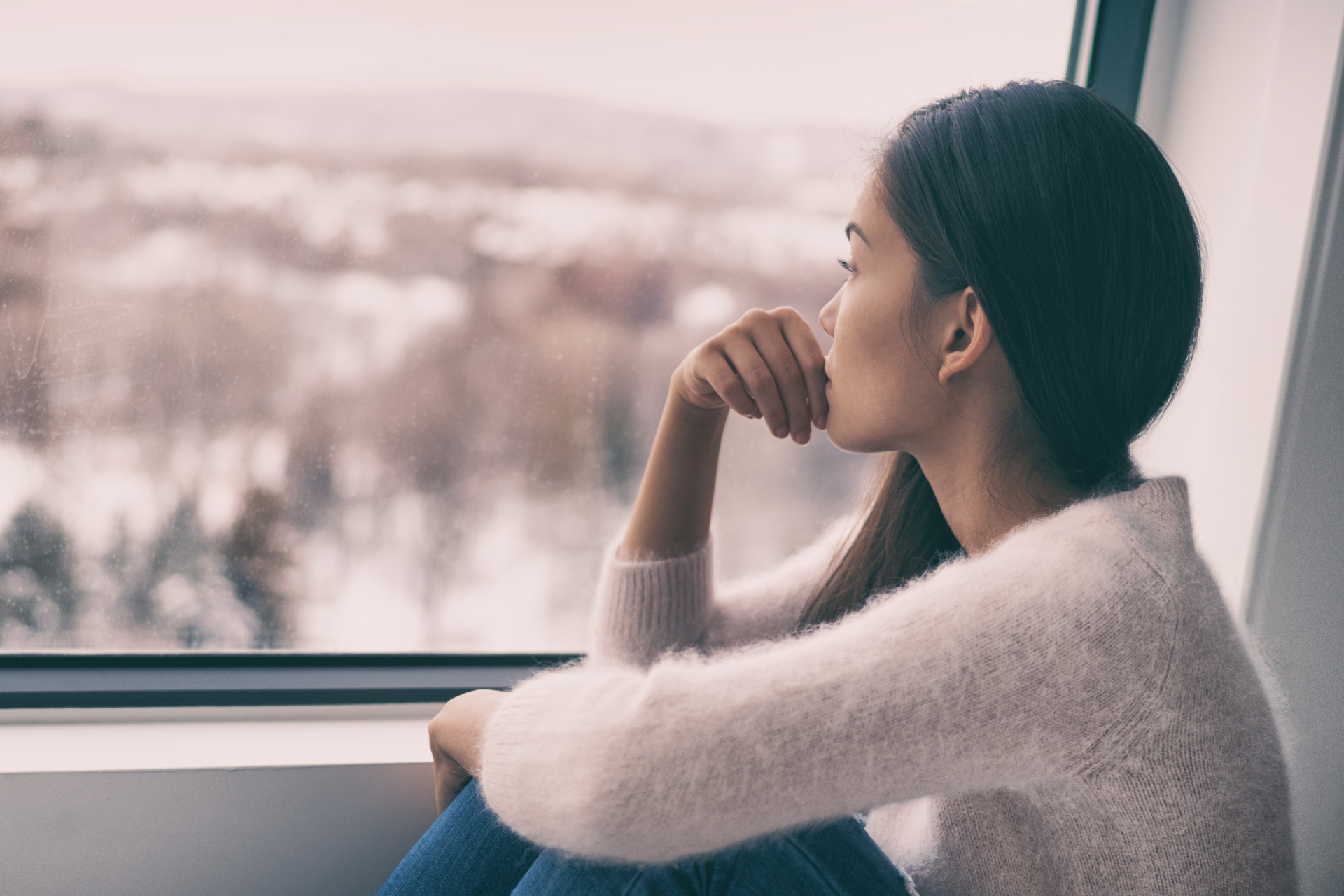Seasonal Affective Disorder, or SAD, affects around 14% of Americans on any given year. But, to add insult to injury, depressive disorder symptoms have tripled in the US since the onset of COVID-19, according to research from the National Center for Health Statistics and Census Bureau, SAD is one form of depression.
The change in seasons can bring lowered serotonin levels, changes to circadian rhythm and increased melatonin production, leading to some tough months for those who experience these symptoms.
What Does Sad Feel Like?
Symptoms are very much like depression but they occur during the fall and early winter. The most prevalent indications are hypersomnia or excessive sleeping, and chronic fatigue despite getting adequate or too much sleep.
Weight gain occurs in 70 percent of people with SAD, according to Health.com. SAD sufferers often self-medicate, in a way, with complex carbohydrates. They crave breads and pastas because carbs boost tryptophan production, releasing serotonin and elevating mood.
Other symptoms are persistent sadness, hopelessness, disinterest in daily life, difficulty concentrating, feeling overwhelmed by simple tasks, lowered productivity, irritability and social isolation.
If you’ve felt any of these symptoms this fall and they’re ongoing rather than sporadic, there are several ways to manage SAD at home. However, it is a serious disorder and should be discussed with a physician before self-treating. Self-monitoring is also critical in treating SAD, as some treatments can have serious consequences, including mania for people with bipolar and post-traumatic stress disorders.
Ways to Cope with Seasonal Depression
1. SAD Light Boxes
Arguably the best way to treat SAD is exposure to bright white light for 15-45 minutes a day. Light therapy effectively re-creates the mood-regulating benefits of daylight. Twila Germanson, Psychiatry MD, explains, “Light boxes decrease your production of melatonin, which we all start making more of when the days are getting shorter. Light therapy, when used in the morning, can reduce melatonin production during the day, so you don’t start feeling like a bear ready for hibernation.”
Germanson recommends using a seasonal affective disorder light box with 10,000 lux output, sitting at a distance of two to three feet. (Lower-lux boxes require you sit within inches of the light.) All you need do is face the light box (without staring directly into it) and sit there. Sip your morning coffee or work at your computer and let light work its wonders.
While UV-free and UV-filtered light boxes are safe, natural/non-medicinal, and very effective for mild and serious seasonal depressive disorder, Germanson cautions such possible side effects as eyestrain, headache and nausea, as well as potential mania in people with bipolar disorder
2. Vitamin D-3
Another of the body’s natural mood-regulators affected by diminished daylight is vitamin D. Produced through sun exposure to the skin, vitamin D is important to healthy brain function and linked to the chemical that keeps us happy, serotonin. Vitamin D deficiency is surprisingly common in people, especially during the winter months.
Dr. Germanson, who lives in the northern states, says, “Many people find [a D-3 supplement] helps get them through the winter.” She advises taking the active form of the vitamin, which is D-3, and no more than 2,000 IUs per day until you get your blood checked for vitamin D levels. “Vitamin D-3 is a fat-soluble vitamin that can store up in your fat cells, so it is important not to take too much as it does not readily ‘wash through’ your system.”
Germanson advises taking gel caps over tabs or powder caps, as gels absorb better, and mentions that in addition to supporting mental health, evidence shows vitamin D may help support the immune system, too.
3. CBD
A growing body of research confirms the efficacy of cannabis compound cannabidiol (CBD) in supporting the production of mood-boosting neurotransmitters—especially serotonin. CBD acts on the nervous system’s own complex network of cannabinoid receptors and serotonin receptors and has no negative tolerance or withdrawal side effects. This cannabinoid has shown to have anti-stress and anti-anxiety effects.
4. SSRIs
As SAD is a subset of depression, it is frequently treated in the pharmacological world with SSRI drugs targeted at controlling serotonin re-uptake. Many popular anti-depressants help to increase the levels of serotonin in the brain. For many people, anti-depressants relieve the symptoms of depression, but people’s reactions may differ depending on the drug.
5. Psilocybin
Psilocybin, the active compound in “magic mushrooms,” can also be as effective as prescription medications, according to early-stage clinical research from London’s Imperial College Center for Psychedelic Research. Brain imaging studies by Drs. Robin Carhart-Harris and David Nutt at the Center reveal remarkable similarities between how psilocybin and SSRI pharmaceuticals work in the brain by controlling 5-HT2A serotonin receptors.
Psilocybin can be taken in microdoses over the course of the winter if you don’t want to experience the psychedelic effect, or in higher doses, which appear to have longer-term effects according to the Center. Legal psilocybin administration in North America is largely only available through research and clinical trials.
6. Cognitive Behavioral Therapy
CBT is a common and effective treatment for depression. CBT-SAD is adapted from traditional cognitive behavioral therapy and also proven highly effective. It involves identifying negative thoughts felt during the fall and winter months and reprogramming them through a change in behaviors and thoughts.
Engaging in practical and enjoyable activities during the winter months can disrupt the negative self-talk, spiralling thoughts and anxiety associated with depression, and even get people out of doors to soak up some happiness-sustaining sunshine.
CBT is often used in tandem with the therapies described above, and many people with severe cases of SAD find the more treatments, the merrier.
If you’re experiencing the symptoms of depression for more than two weeks, it’s time to reach out for a little professional help. If you are feeling suicidal, please call the National Suicide Hotline. If your SAD started this fall or recurs this time every year, chances are your depression is seasonally related and may need treatment solely during the dark months.
Have Questions? We Can Help
Our cannabis counsellors are available to chat, free of charge, to help you get what you want and need out of your cannabis experience. Give us a call today.






